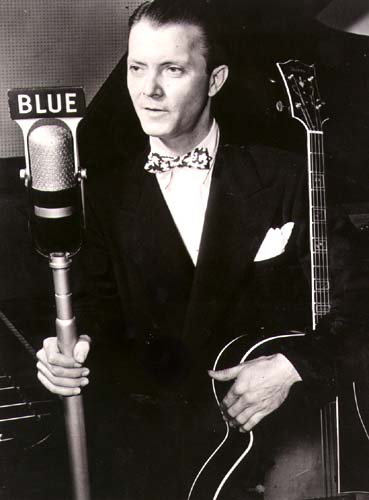
Eddie Condon. Photo Down Beat Magazine by Hank O’Neal
In both 1943 and ‘44 a wisecracking fast-talking Midwesterner named Eddie Condon won the Down Beat magazine poll for jazz guitar. Eddie Condon was Chicago jazz in the 1940s. He was a brilliant bandleader, composer and entrepreneur. Joining The Jim Cullum Jazz Band to celebrate the Condon sound are tenor saxophonist Bobby ‘Lips’ Levine and vocalist Stephanie Nakasian. Comedian and actor Jerry Stiller, renowned for his roles on Seinfeld and The King of Queens, portrays Eddie Condon in excerpts from Condon’s autobiography, We Called It Music.
Albert Edwin Condon was born in Goodland, Indiana in November 1905. Born deaf in one ear didn’t hinder his passion for music. By age 10, Eddie was playing ukulele with his brothers and sisters. At 17, he was making a living making music in local clubs and dance halls.
1947 was a big year for Eddie Condon. His autobiography hit the best-seller lists, his recordings topped the charts and his network television series Eddie Condon’s Floor Show was a draw.
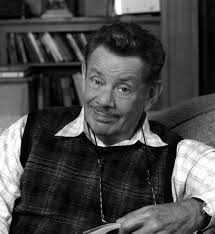
Jerry Stiller photo courtesy of the artist.
On this radio production, actor Jerry Stiller brings Condon’s stories from We Called It Music to life; here Jerry as Eddie describes his first exposure to jazz as a teenager:
“I was nuts about music and I hung out with the older boys. What I knew was how to shoot pool and fight. My brother came home after a year on the road and brought some new phonograph records with him. I’d never heard music like this before, stuff like “Muscle Shoals Blues” by Mamie Smith and Her Jazz Hounds. “What’s that?” I asked. “It’s a new kind of music,” Jim said. “How do you like it?” I listened for a while, and I said, “It doesn’t bother me.”
Condon soon formed a band with other fledgling jazz players at Austin High—saxophonist Bud Freeman and cornetist Jimmy McPartland. In love with the new sounds they’d heard on recordings, they made a pilgrimage to Chicago’s South Side to hear the real thing, in person. There was no doubt the King Oliver Creole Jazz Band had to be the most authentic New Orleans style jazz band anywhere.
Actor Jerry Stiller as Condon waxes rhapsodic recalling the first time he heard Oliver’s band:
“King Oliver lifted his horn, and the first blast of “Canal Street Blues” hit me. We were hypnotized. Everyone in the band was playing what he wanted to play and it was all mixed together as if someone had planned it with a set of micrometer calipers. Notes I had never heard were peeling off the edges and dropping through the middle. There was a tone from the trumpets like warm rain on a cold day. Freeman and McPartland and I were immobilized. The music poured into us like daylight running down a dark hole. The choruses rolled on like high tide, getting wilder and more wonderful. Armstrong seemed to hear what Oliver was improvising and reproduce it himself at the same time. It was impossible, so I dismissed it, but it was true. Then, the two wove around each other like suspicious women talking about the same man. When they finally finished, McPartland said, “How do you like it?” There was only one thing to say. “It doesn’t bother me at all.”
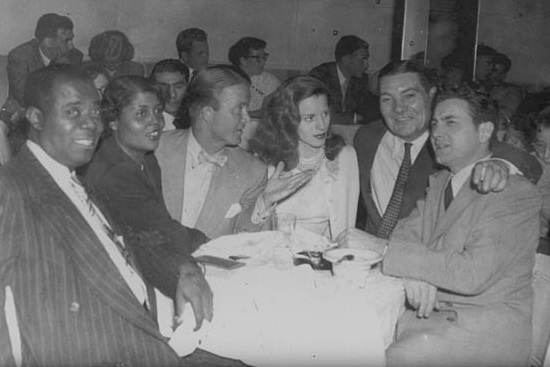
Louis and Lucille Armstrong, Eddie Condon, unknown woman, Jack Teagarden & Joe Bushkin. Photo courtesy joebushkin.com
Eddie Condon had an amazing ability to attract the best talent in the business for his club dates and recording sessions. Bud Freeman, Billy Butterfield, Gene Krupa and “Wild Bill” Davison are a few great names in jazz to have played with Condon on a regular basis. Condon was a charismatic leader and fiercely loyal to the performers he worked with. Some critics say Condon was a far better entrepreneur and promoter than musician. Since Eddie Condon was a rhythm guitarist and never took solos, some have played down his musical talent. Jim Cullum says, “I’ve always admired Condon’s playing. He was coming out of a different tradition, and his musical goal was to play great rhythm guitar. This can really put the glue on a rhythm section, and a good rhythm section is the key to a great jazz band.”
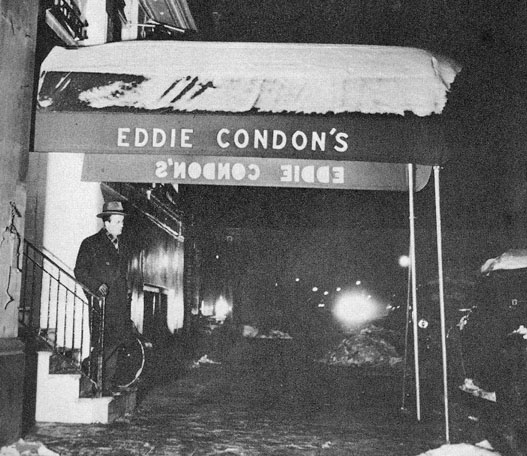
Entrance to Eddie Condon’s on West Third, NYC, 1945. Photo by Hank O'Neal.
A busy musician, bandleader and club owner, Eddie Condon also produced a popular series of live radio broadcasts from The Town Hall in New York, surrounded by the greatest names in jazz—Louis Armstrong, Jack Teagarden, Willie “The Lion” Smith and Bob Haggart. Eddie Condon’s Town Hall Concerts were broadcast over what was known as the Blue Network. The announcer’s introduction promised “the only unrehearsed, free-wheeling, completely barefoot music on the air.”
Jim Cullum recalls what it was like to visit Eddie Condon at his New York nightclub:
“Eddie Condon was a witty guy. He looked sharp, dressed sharp; he always wore a bow tie. He’d circulate around the club and visit with the customers, writing notes down on little pieces of paper and stuffing them in his pockets. Nobody knew exactly what he was writing down. He called it “taking care of Parish business.” Sometimes he’d actually get around to sitting down and playing with the band. Condon went out of his way to be very nice to me, much nicer than he needed to be, really. Sometimes the club was full of star musicians—Yank Lawson, Bob Wilber, Peanuts Hucko—he always had great musicians there.”
About the Music
Jim Cullum and his Band present a sampling of early 20th century tunes Eddie Condon might have heard on 78 rpm records as he was growing up—especially as performed by the Original Dixieland Jazz Band and the New Orleans Rhythm Kings. Condon frequently played this repertoire, which later came to be known as ‘Chicago Style’ jazz.
“Prince of Wails” from 1924 by the New Orleans Rhythm Kings pianist Elmer Schoebel.
“Fidgety Feet” from 1919 by the Original Dixieland Jazz Band, the first jazz band ever to make a recording.
“Ballin' The Jack” from 1913 and “Jazz Me Blues” from 1917 are ‘chestnuts’ frequently performed on a typical set at Condon’s nightclub.
This radio show also features several well-known compositions closely associated with Condon. Jim Cullum performs “Liza, ” a Condon original, with the same pared-down instrumentation as the original recording—cornet, clarinet, guitar and string bass.
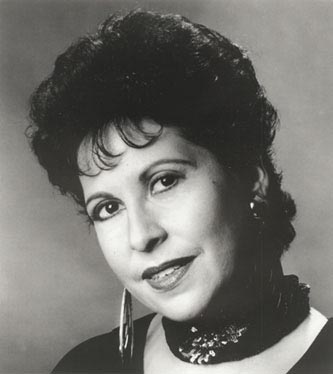
Stephanie Nakasian photo courtesy of the artist
Singer Stephanie Nakasian handles the vocal duties on “Any Time, Any Day, Anywhere” and “Wherever There's Love,” both dating from a series of 1940s recordings by Condon with singer Lee Wiley. Wiley was one of the most influential vocalists of the day and a regular on Condon club dates and recording sessions. Nakasian comments on Wiley’s unique style: “She had wonderful phrasing; it was very much like that of an instrumentalist, a little laid back. In fact, some call it ‘Lee’s lazy beat.’ Also, I just love the depth of emotion she gets in her singing. It’s the kind of voice that you really have to listen to with your feelings.”
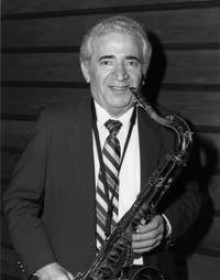
Bobby Levine photo courtesy of the artist
Saxophonist Bud Freeman composed “The Eel” for a 1933 Eddie Condon recording session. One of the first bandleaders to include the tenor saxophone in the front line of a “hot” band, Condon often picked Bud Freeman to fill the slot. Guest Bobby ‘Lips’ Levine is one of the foremost exponents of Bud Freeman’s playing style.
“When Your Lover Has Gone” dates from 1931, and is the closing theme at Jim Cullum’s Landing jazz club, as it was for Eddie Condon at his nightclub venues.
Home Page photo of bandleader Eddie Condon by Hank O'Neal.
Text based on Riverwalk Jazz script by Margaret Moos Pick ©1991

